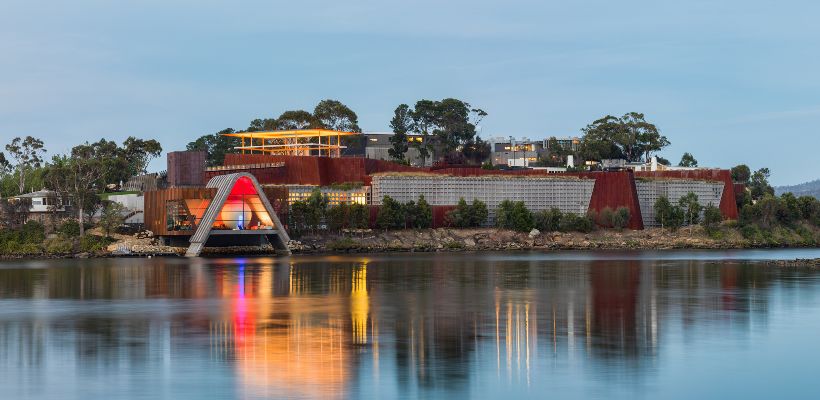In planning Southern Frontiers, the Australian and New Zealand Map Society set out to find more than just a conventional conference venue. We wanted a place that would challenge assumptions and inspire fresh ways of thinking about maps, myths, and the often surprising connections between them.
We found that place in the Museum of Old and New Art (MONA).
MONA is renowned for pushing the boundaries of art, history, and interpretation. It invites visitors to question how meaning is made, how knowledge is shaped, and how power and culture influence what we see and understand. Like the maps we study, it challenges assumptions and highlights the importance of context. This makes it an ideal venue for a conference that explores how maps shape our understanding of geography, history, and the world around us.
A Place of Provocation and Curiosity
MONA is renowned for pushing the boundaries of art, history, and interpretation. It invites visitors to question how meaning is made, how knowledge is shaped, and how power and culture influence what we see and understand. Like the maps we study, it challenges assumptions and underscores the importance of context. This makes it an ideal venue for a conference exploring how cartography shapes our understanding of geography, history, and the world around us.
Maps and MONA: A Natural Fit
While best known for contemporary art and immersive installations, MONA also holds a growing collection of rare and historically significant maps. Highlights of its Maps of Australia collection include Johann Reger’s 1482 edition of Ptolemy’s world map, works by Abraham Ortelius, and charts by Captain James Cook. This developing collection reflects MONA’s broader interest in how we visualise, record, and make sense of our world.
Tasmania: A Meaningful Southern Setting
Long regarded as a southern frontier—remote, rugged, and shaped by histories of exploration, encounter, and transformation—Tasmania offers a fitting context for examining how the southern world has been mapped, mythologised, and reimagined over time.


